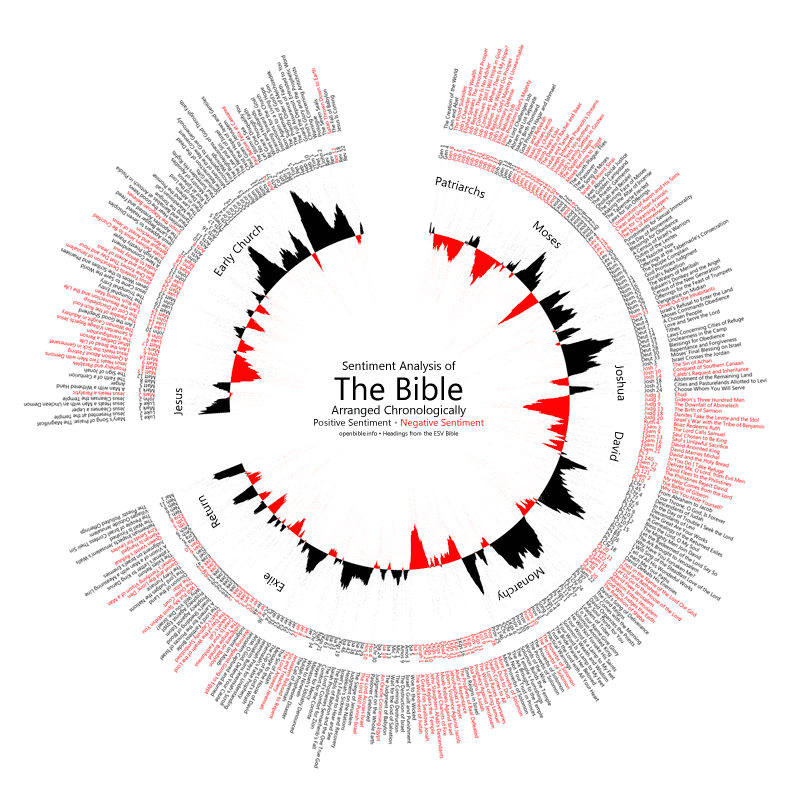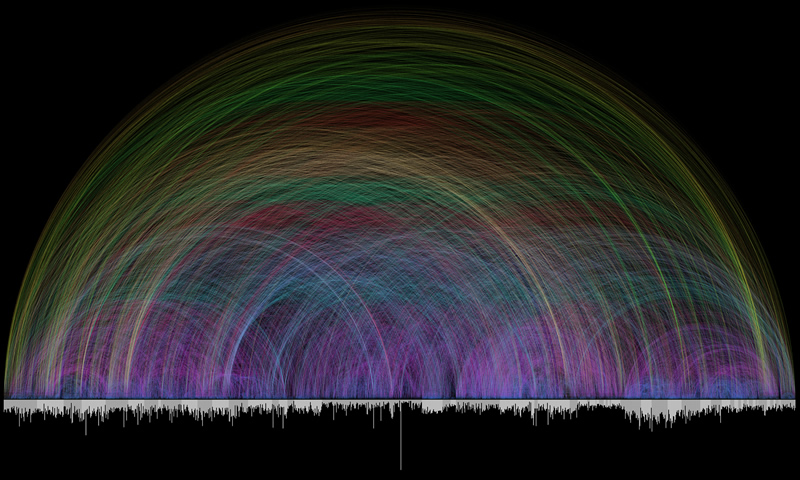This is quite an interesting way to chart the progression of the Biblical narrative. A “sentiment analysis” from OpenBible.

Here’s the methodology applied to produce these graphics.
“Sentiment analysis involves algorithmically determining if a piece of text is positive (“I like cheese”) or negative (“I hate cheese”). Think of it as Kurt Vonnegut’s story shapes backed by quantitative data.
I ran the Viralheat Sentiment API over several Bible translations to produce a composite sentiment average for each verse. Strictly speaking, the Viralheat API only returns a probability that the given text is positive or negative, not the intensity of the sentiment. For this purpose, however, probability works as a decent proxy for intensity.”
From a cursory analysis the modelling adds up to most understandings of Biblical theology – except perhaps that exile isn’t as confronting emotionally, or as dire and depressing, as we might have thought – probably because most exilic texts include expressions of hope for delivery.
Here’s the sentiment analysed on a book by book basis.


